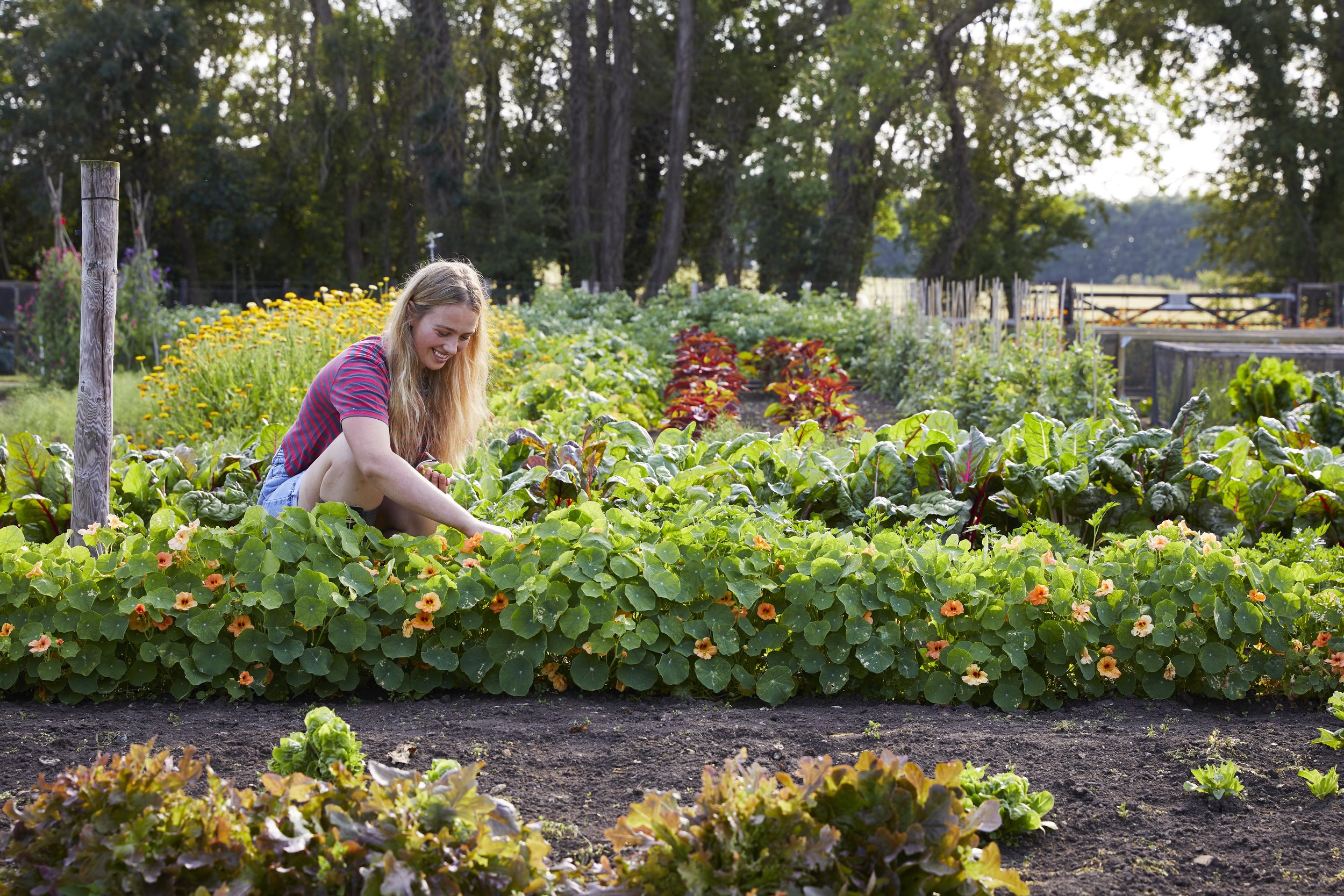A Walk Through the Gardens
Situated adjacent to the water meadows of the river Leach, our kitchen gardens are a joy. With tranquil views, we often see the barn owls hunting throughout the day, kites and buzzards soaring overhead, white egrets and herons, snipe, teal and mallard and sometimes a flash of the brightest blue kingfisher.
The soil is alluvial meaning it is truly excellent for growing vegetables. Deposited by the river as it meanders through the farm the soil consists of sandy loam, with thankfully only a few areas of thick river basin clay. High in organic matter and with a naturally good propensity to hold water makes for excellent growing conditions. There is nothing more lovely to see than neat and colourful rows of vegetables and the freshest ingredients on you plate, growing is so rewarding but there are many challenges that can make things difficult. At the top of the list is the weather with this year a very cold spring and wet ground delaying early plantings. Pigeons and rabbits also have an ability of undoing good work in a few minutes and, at times, weeds can overwhelm the best of us.
Staying on top of the weeds is a constant challenge and we have used mulching, raised no dig beds and cover crops to help do this. We planted a rye and vetch mix cover crop in the autumn last year. Vetch is a legume and fixes substantial quantities of nitrogen into the soil and the roots of both crops protect the soil from soil erosion. Rye also imparts an allelopathic effect on weeds, meaning it releases chemicals from its roots and stems that inhibit germination and prevent growth of many weeds, resulting in rye being an extremely effective natural herbicide in addition to its array of further positive effects on the soil.
Standing beautifully tall in late April we then cut the rye and vetch to prevent them seeding and have interplanted with vegetables such as chard, it will be interesting to see the benefits of this companion planting. We have used various mulches including wood chippings and shredded leaves and a well rotted organic compost, we also plan to use wool. Often considered a by-product, wool has sadly lost its stature and worth, with many shepherds needing to pay to have their fleeces removed. Each summer, once the last frost is behind us, the lovely flock of rare breed Welsh black mountain sheep are sheared; their wool is too coarse for spinning into yarn and so we look to other uses.
As a natural material designed to insulate and wick water, it lends itself perfectly to the vegetable garden. In the summer, wool keeps the soil cool, while in the winter it keeps in the warmth. Much like mulch, wool also prevents the soil from drying out trapping in moisture from the risk of evaporation, helping to keep the weeds down and maintaining nutrients in the soil. We are lucky to have our own fleeces readily available, however you can source wool mats for gardens too.
Many of our ash trees along the western border of the gardens have been damaged by Hymenoscyphus fraxineus, a fungal disease of Asian origin that causes the trees to die back becoming unstable. It is always so sad to cut down a beautiful tree but their removal has had several unforeseen benefits, including allowing much more light to the cut flower and herb gardens which has been very welcome and producing a large amount wood chip. The wood chip has been used throughout the gardens to form paths between the perennial cutting flower and vegetable plantings and around the soft fruit to suppress weeds which has not only been extremely effective so far, it also looks very smart. We are growing lots of lovely things, from baby carrots, radishes, onions, beetroot, fennel, rocket, lettuces, chicories and mustards, Swiss chard and spinach, turnips, assorted beans, new potatoes, soft herbs and edible flowers to Charlie’s favourite calcot onions and agretti. The journey from seed to plate is a labour of love, every seed has been sown, watered and nurtured by the gardeners. Harvested by the chefs and gardeners together each morning they are cleaned and prepared to go to the kitchens where they are washed and prepared again by the chefs. There are tastings and walks to the garden with all our staff to ensure they maintain that connection to the land and understand the journey from seed to plate. The freshest simplest of seasonal home grown vegetables taste sublime, are good for us and most definitely are rather beautiful.






